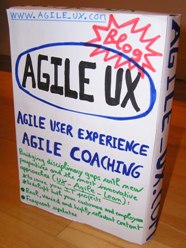Posted by jc-Qualitystreet on 2013/07/30
Changing the culture of an organization is a complex and multifaceted operation that requires a lot of effort: this is why I like the word « transformation » . This transformation can obviously be undertaken from various angles … hacking is one of them.
Hacking is a viral and very relevant approach when it comes to change and improve cultural elements of everyday working-life, like meetings…
Meeting is a strong symbol in organizational culture… and meetings, often seen as waste of time, can be hacked!
Here are the 8 hacks…
See the full article in french on www.qualitystreet.fr
Posted by jc-Qualitystreet on 2011/12/01
Including the notorious « To learn list » in a mini format…
At home, I don’t really need a feedback door…, but the « Taskboard door » is more useful 🙂
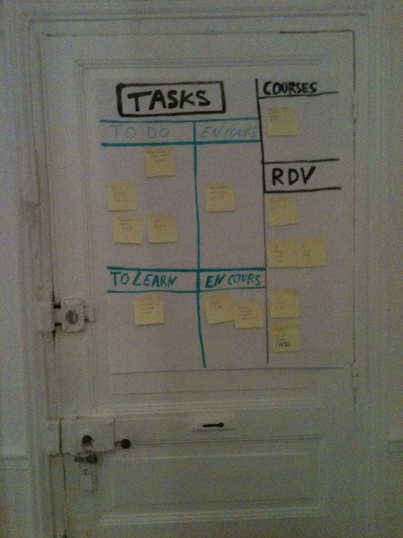
Visual management At home
Release 1 contains:
- An area dedicated to generic tasks (To do / In progresss; no need to track the done)
- An area dedicaded to learning tasks (crucial to me): need to be enlarged and improved
- An area dedicated to shopping (food shopping; before leaving I just have to take the note)
- An area dedicated to appointements (in french, we say RDV)
Using it for one month, I like it!
Posted by jc-Qualitystreet on 2011/11/27
« Remember the Future » is one of the 13 games offered and popularized by Luke Hohmann.
I’ve already talked about the Product Vision Box and Speed Boat which I use regularly … it is now time to introduce you with another game…
Remember the future … not only to mitigate cognitive biase
your customers and users are not good to speculate on the use of a future product. The user is not a designer, and this kind of questions: « What should our product do? » is mostly useless.
Too vague, too open,… As a designer or user researcher you, you need to be cautious with the comments users make about a future usage…
Users tend to generalize, simplify or idealize ...
Remember the future is a little technique to minimize these biases by immersing the user in a past that will be more concrete for him.
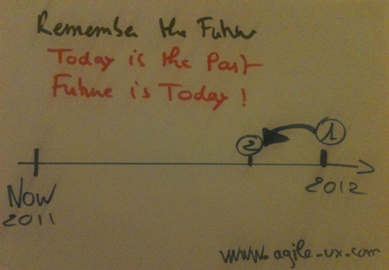
It’s a simple game, really appropriate to frame the content of a release, or to agree on the success criteria of a specific project or mission. *
And this is exactly how I have used it for the first time 4 years ago: the objectives of the mission were unclear, the context was complex, we had a large number of « high level » participants at our workshop…. Remember the future allowed us to move smoothly and to complete the impressive series of workshops requested …
Remember the future help you to establish a reference point for comparison; it gives context and enables both better understanding and exploration. As Luke Hohman says, it works:
« Because it is easier to understand and describe a future event from the past tense over a possible future event «
An example of scenario:
« We are in September 2012 it is now six months that you use this new product, you’re happy with it and people can see it. (Step 1) This morning you meet your boss asking you what do you like so much in this new product, and what the product has done for you the last three months » (Step 2)
There are many variations on the implementation of the game (various scenarios or levels of detail) but the most important element remains the questioning:
BEFORE (and classically without the game): « What the product should do? »
AFTER (as part of the game): Context + « What will the product have done? »
The idea behind the game, as any UX technique, is to play the game with many users… Don’t hesitate to alternate « one on one » formats or small group dynamics …
Another benefit of Remember the future is that it can be used in multiple situations. Recently, I used the game to fit the expectations of my clients for my agile coaching activities.

They were two … we first exchanged on the issue, I gave them the scenario and asked them to work individually for 5 minutes generating notes. Then, they did grouping on the poster.
Results: we had a clear idea of 4 or 5 areas to focus on!
« Involve me and I’ll understand! »
Posted by jc-Qualitystreet on 2011/11/20
Or gaming & agile mindset at Home 🙂
Christmas is coming and for the fourth year we’ve prepared during a great collaborative workshop with kids, our letter to Santa Claus (or technically speaking, our prioritized Backlog for Santa Claus)
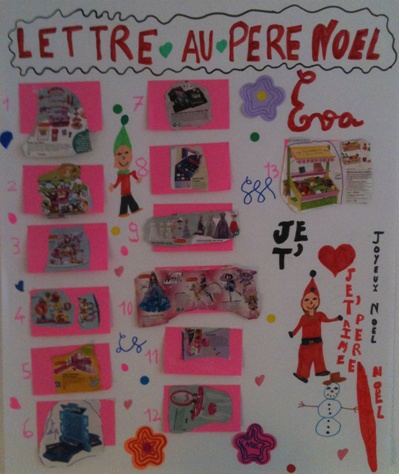 Final Version Eva –
Final Version Eva –
A prioritized and customized backlog !
Some constraints…
- Santa Claus is very busy
- His sledge is not expandable
- The deadlines are tight
- The delivery date cannot be moved
- And unfortunately a additional one this year, two sites for the delivery… that’s life… 🙁
The workshop
We didn’t have to make a long opening: the kids are already familiar with the process, they’re ready and impatient to start…
They know they cannot have everything (lessons learned from the past…) and that being good (or not) has an impact on Santa Claus’s motivation to deliver what they wish…So they’re aware of the necessity to set priorities for their Christmas backlog !
Step 1: Needs analysis, Brainstorming and data collection
Passionate reading for weeks, intensive research from several sources… confrontation with friends at school were a fantastic preparation for our « collaborative workshop » at Home
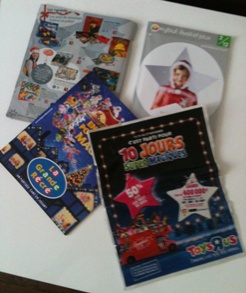
Catalogs
…
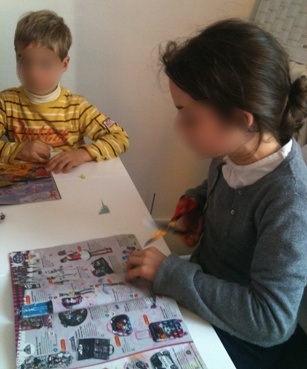
Items selection
Step 2: Backlog Initialization
- Images are cut
- One image is placed by sticky note(pink ones for my daughter; orange notes for my son). The main backlogs are initiated
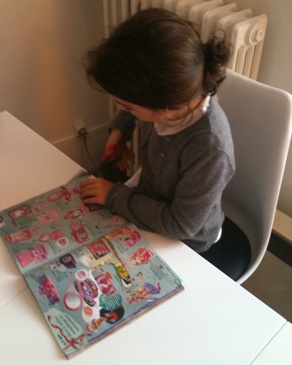
Time to cut
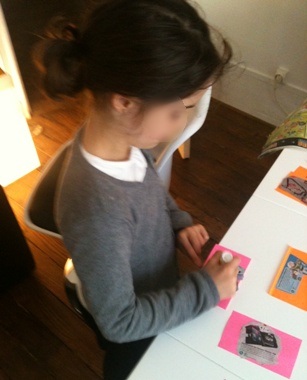
One image by Sticky note

Backlog item example... Buzz l'Eclair - The 2C rule: Card and Conversation 🙂
Step 3: Backlog Prioritization
Notes are laid either on the ground or on the table (their preference this year). Kids make their prioritization effort and rank them in order of preference. They place on the top toys they want most, the most important to them…
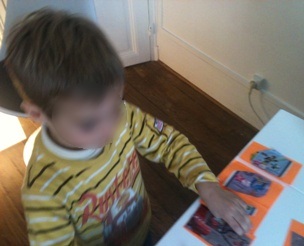
Prioritization effort: Here are the Top priorities
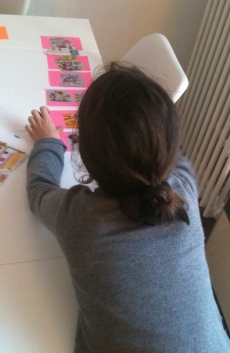
Starting by the top priorities
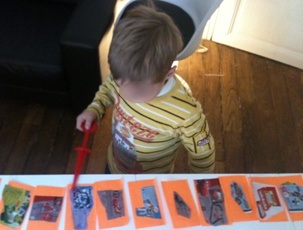
Priorities checking: compare and use triangulation ! this PO skill is acquired
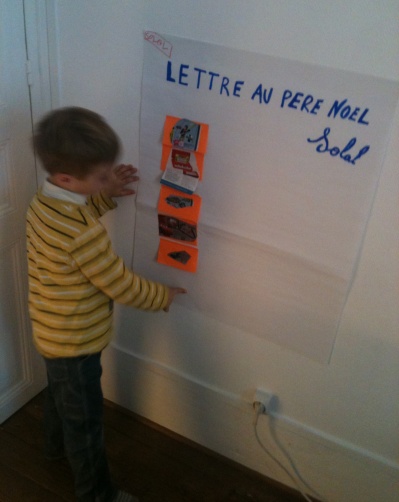
Move to the wall
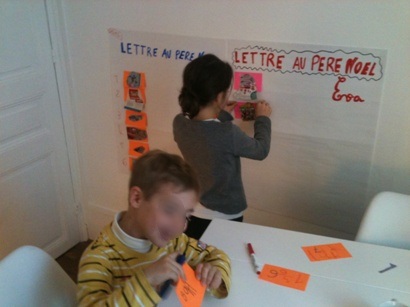
Move to the wall for a better visualization...They really enjoyed it!
Step 4: Backlog Customization
Since last year, the backlog customization has become a crucial step…
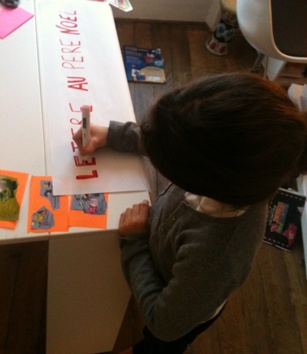
Backlog customization: essential!
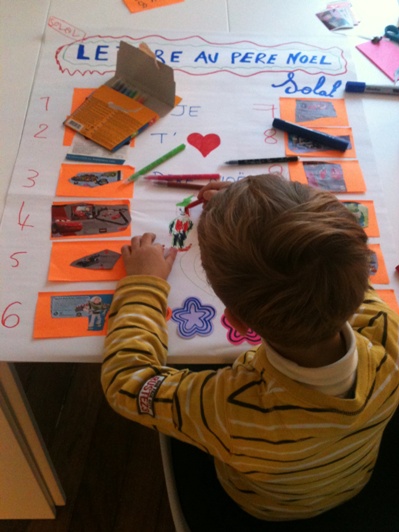
Customization...
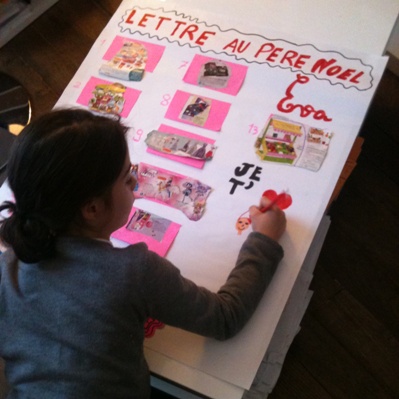
More customization for my daughter
Step 5 : Backlog display and printed version
Go to the room for an optimal visibility & accessibility.

Final Version Eva
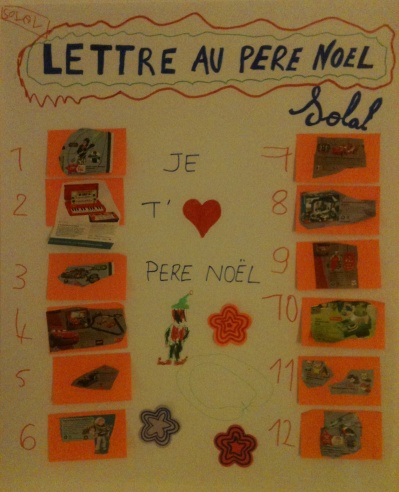
Final Version Solal (actually not yet finished...)
Print a version in a Letter format and send it to Santa Claud…
Results
Once again, we really had a great time… 🙂
Posted by jc-Qualitystreet on 2011/11/15
… learning again and again!!!
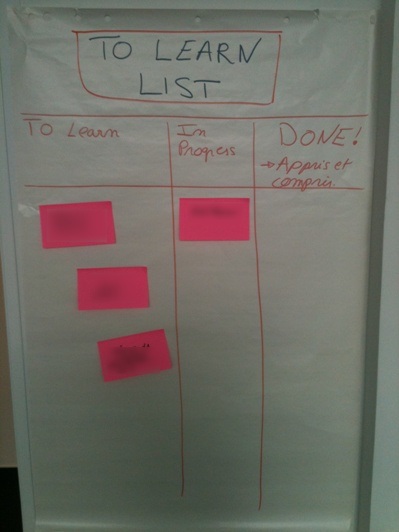
A "To learn List" for the Team
Agility and learning are intimately linked.
Learning is a key dimension of Agility, a key component of an agile mindset, and a major Human characteristic. In parallel, Agility (with Scrum or XP for example) is a land where learning can really flourish:
- Co-located and cross-functional teams are sought…
- Cooperation and collaboration are facilitated…
- learning situations (Release planning, Collaborative workshops and Product Backlog Refinement, Planning poker, Pair-Designing, Pair-programming, Retrospective, gaming…) are fostered…
- knowledge sharing is expected…
they all are good examples and valuable opportunities for learning and improvement. But why not going further and giving to the le arning activity a good place on the Team Information radiator?
On the wall, you who already have your Taskboard, your Product Vision, your Product backlog, your Impediments List (obstacles), maybe the Personas for your Product and a Risk board.
Try now the « To Learn list » in order to monitor and enhance this essential activity.
The « To learn List » belongs to the information radiator. Continuously visible and accessible by anyone (management including…), it can be updated continuously even if the « Daily Scrum », « After daily », Collaborative workshops or Retrospective are excellent moments to do that.
Personally I have also adopted this « To learn List » at home and am very satisfied with it!
Just Be Curious, Try it!




















